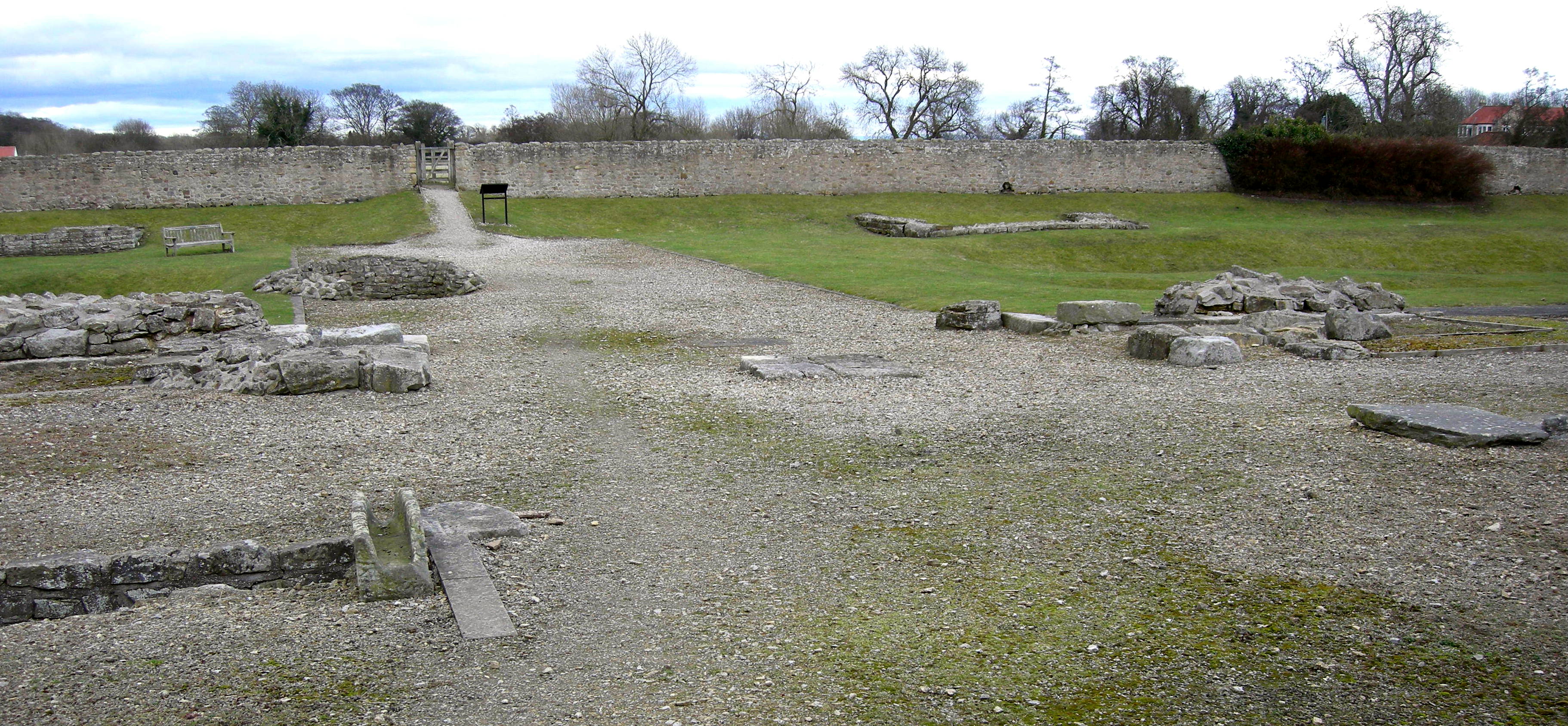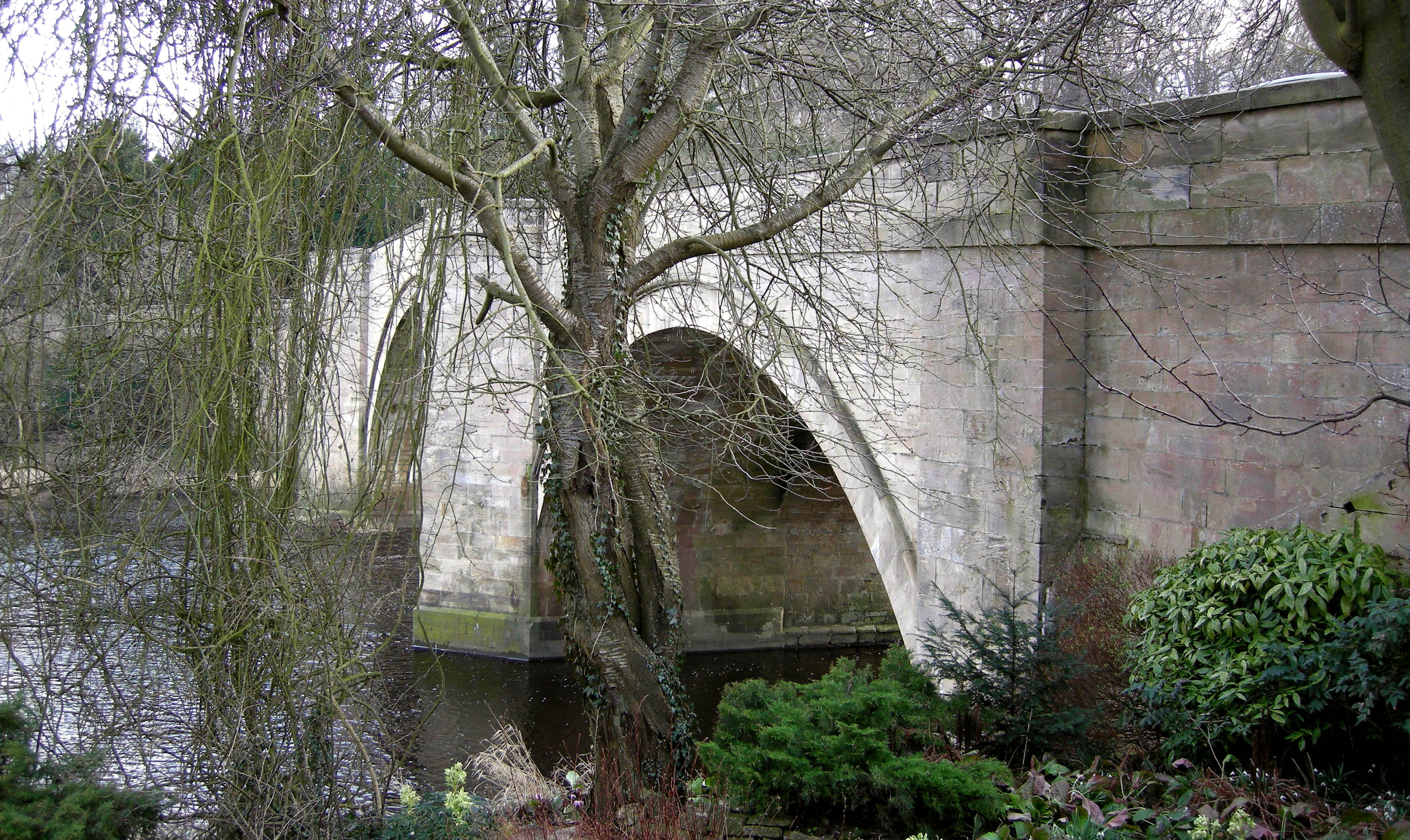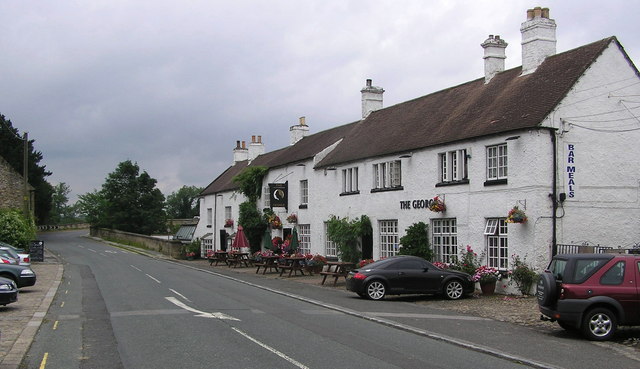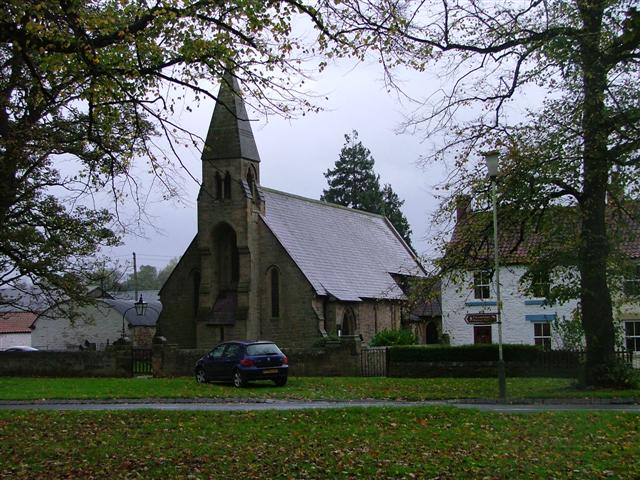Cliffe
Civil Parish in Yorkshire Richmondshire
England
Cliffe
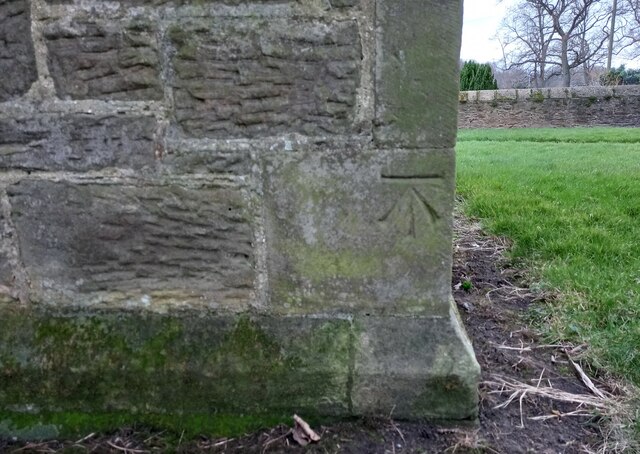
Cliffe is a civil parish located in the East Riding of Yorkshire, England. It is situated approximately 5 miles north of Selby and 14 miles south of York. The village sits on the eastern bank of the River Ouse, nestled between lush green fields and rolling countryside.
With a population of around 600 residents, Cliffe is a small and close-knit community. The area is predominantly rural, characterized by its picturesque landscapes and peaceful atmosphere. The village is well-known for its charming cottages and traditional architecture, providing a quaint and idyllic setting.
One of the main attractions in Cliffe is the All Saints Church, which dates back to the 12th century. This historic building showcases beautiful stained glass windows and intricate stone carvings, making it a popular destination for history enthusiasts and architecture lovers.
The surrounding countryside offers ample opportunities for outdoor activities, including walking, cycling, and fishing. The River Ouse is particularly renowned for its fishing spots, attracting anglers from far and wide.
Although Cliffe is predominantly residential, there are a few amenities available for locals and visitors. These include a village hall, a post office, and a local pub, where residents can gather and socialize.
Overall, Cliffe exudes a tranquil and timeless charm, making it an ideal destination for those seeking a peaceful retreat in the heart of the Yorkshire countryside.
If you have any feedback on the listing, please let us know in the comments section below.
Cliffe Images
Images are sourced within 2km of 54.528497/-1.68776 or Grid Reference NZ2014. Thanks to Geograph Open Source API. All images are credited.
![Piercebridge Roman features [1] This information board about the Roman Bridge is located in the car park.
Piercebridge is a village in the county of Durham, some 5 miles west of Darlington. The village overlies a Roman fort built circa 265 where Dere Street, the Roman road from York to Newstead, crossed the River Tees. The fort was occupied until the fifth century and a civilian settlement was established to the east of the fort. The river has changed course and the remains of a Roman bridge over the river lie about a quarter of a mile east of the current bridge. Most of the site of the village is a Scheduled Ancient Monument, with details at: <span class="nowrap"><a title="https://historicengland.org.uk/listing/the-list/list-entry/1002365" rel="nofollow ugc noopener" href="https://historicengland.org.uk/listing/the-list/list-entry/1002365">Link</a><img style="margin-left:2px;" alt="External link" title="External link - shift click to open in new window" src="https://s1.geograph.org.uk/img/external.png" width="10" height="10"/></span>](https://s0.geograph.org.uk/geophotos/07/31/89/7318920_88671c65.jpg)
![Piercebridge features [1] This path leads to the remains of the Roman bridge.
Piercebridge is a village in the county of Durham, some 5 miles west of Darlington. The village overlies a Roman fort built circa 265 where Dere Street, the Roman road from York to Newstead, crossed the River Tees. The fort was occupied until the fifth century and a civilian settlement was established to the east of the fort. The river has changed course and the remains of a Roman bridge over the river lie about a quarter of a mile east of the current bridge. Most of the site of the village is a Scheduled Ancient Monument, with details at: <span class="nowrap"><a title="https://historicengland.org.uk/listing/the-list/list-entry/1002365" rel="nofollow ugc noopener" href="https://historicengland.org.uk/listing/the-list/list-entry/1002365">Link</a><img style="margin-left:2px;" alt="External link" title="External link - shift click to open in new window" src="https://s1.geograph.org.uk/img/external.png" width="10" height="10"/></span>](https://s1.geograph.org.uk/geophotos/07/31/89/7318921_7bafcd77.jpg)
![Piercebridge Roman features [2] The original Roman timber bridge was destroyed in a flood and a replacement stone bridge was built some 200 metres downstream. The river has since changed course and the remains of the stone bridge, seen here, were discovered in the 1970s. The site is a Scheduled Ancient Monument with details at: <span class="nowrap"><a title="https://historicengland.org.uk/listing/the-list/list-entry/1004062" rel="nofollow ugc noopener" href="https://historicengland.org.uk/listing/the-list/list-entry/1004062">Link</a><img style="margin-left:2px;" alt="External link" title="External link - shift click to open in new window" src="https://s1.geograph.org.uk/img/external.png" width="10" height="10"/></span>
Piercebridge is a village in the county of Durham, some 5 miles west of Darlington. The village overlies a Roman fort built circa 265 where Dere Street, the Roman road from York to Newstead, crossed the River Tees. The fort was occupied until the fifth century and a civilian settlement was established to the east of the fort. The river has changed course and the remains of a Roman bridge over the river lie about a quarter of a mile east of the current bridge. Most of the site of the village is a Scheduled Ancient Monument, with details at: <span class="nowrap"><a title="https://historicengland.org.uk/listing/the-list/list-entry/1002365" rel="nofollow ugc noopener" href="https://historicengland.org.uk/listing/the-list/list-entry/1002365">Link</a><img style="margin-left:2px;" alt="External link" title="External link - shift click to open in new window" src="https://s1.geograph.org.uk/img/external.png" width="10" height="10"/></span>](https://s2.geograph.org.uk/geophotos/07/31/89/7318922_4fbb09c8.jpg)
![Piercebridge Roman features [3] The original Roman timber bridge was destroyed in a flood and a replacement stone bridge was built some 200 metres downstream. The river has since changed course and the remains of the stone bridge, seen here, were discovered in the 1970s. The site is a Scheduled Ancient Monument with details at: <span class="nowrap"><a title="https://historicengland.org.uk/listing/the-list/list-entry/1004062" rel="nofollow ugc noopener" href="https://historicengland.org.uk/listing/the-list/list-entry/1004062">Link</a><img style="margin-left:2px;" alt="External link" title="External link - shift click to open in new window" src="https://s1.geograph.org.uk/img/external.png" width="10" height="10"/></span>
Piercebridge is a village in the county of Durham, some 5 miles west of Darlington. The village overlies a Roman fort built circa 265 where Dere Street, the Roman road from York to Newstead, crossed the River Tees. The fort was occupied until the fifth century and a civilian settlement was established to the east of the fort. The river has changed course and the remains of a Roman bridge over the river lie about a quarter of a mile east of the current bridge. Most of the site of the village is a Scheduled Ancient Monument, with details at: <span class="nowrap"><a title="https://historicengland.org.uk/listing/the-list/list-entry/1002365" rel="nofollow ugc noopener" href="https://historicengland.org.uk/listing/the-list/list-entry/1002365">Link</a><img style="margin-left:2px;" alt="External link" title="External link - shift click to open in new window" src="https://s1.geograph.org.uk/img/external.png" width="10" height="10"/></span>](https://s0.geograph.org.uk/geophotos/07/31/89/7318924_111a4246.jpg)
![Piercebridge Roman features [4] The original Roman timber bridge was destroyed in a flood and a replacement stone bridge was built some 200 metres downstream. The river has since changed course and the remains of the stone bridge, seen here, were discovered in the 1970s. The site is a Scheduled Ancient Monument with details at: <span class="nowrap"><a title="https://historicengland.org.uk/listing/the-list/list-entry/1004062" rel="nofollow ugc noopener" href="https://historicengland.org.uk/listing/the-list/list-entry/1004062">Link</a><img style="margin-left:2px;" alt="External link" title="External link - shift click to open in new window" src="https://s1.geograph.org.uk/img/external.png" width="10" height="10"/></span>
Piercebridge is a village in the county of Durham, some 5 miles west of Darlington. The village overlies a Roman fort built circa 265 where Dere Street, the Roman road from York to Newstead, crossed the River Tees. The fort was occupied until the fifth century and a civilian settlement was established to the east of the fort. The river has changed course and the remains of a Roman bridge over the river lie about a quarter of a mile east of the current bridge. Most of the site of the village is a Scheduled Ancient Monument, with details at: <span class="nowrap"><a title="https://historicengland.org.uk/listing/the-list/list-entry/1002365" rel="nofollow ugc noopener" href="https://historicengland.org.uk/listing/the-list/list-entry/1002365">Link</a><img style="margin-left:2px;" alt="External link" title="External link - shift click to open in new window" src="https://s1.geograph.org.uk/img/external.png" width="10" height="10"/></span>](https://s3.geograph.org.uk/geophotos/07/31/89/7318927_206de143.jpg)
![Piercebridge Roman features [5] The original Roman timber bridge was destroyed in a flood and a replacement stone bridge was built some 200 metres downstream. The river has since changed course and the remains of the stone bridge, seen here, were discovered in the 1970s. The site is a Scheduled Ancient Monument with details at: <span class="nowrap"><a title="https://historicengland.org.uk/listing/the-list/list-entry/1004062" rel="nofollow ugc noopener" href="https://historicengland.org.uk/listing/the-list/list-entry/1004062">Link</a><img style="margin-left:2px;" alt="External link" title="External link - shift click to open in new window" src="https://s1.geograph.org.uk/img/external.png" width="10" height="10"/></span>
Piercebridge is a village in the county of Durham, some 5 miles west of Darlington. The village overlies a Roman fort built circa 265 where Dere Street, the Roman road from York to Newstead, crossed the River Tees. The fort was occupied until the fifth century and a civilian settlement was established to the east of the fort. The river has changed course and the remains of a Roman bridge over the river lie about a quarter of a mile east of the current bridge. Most of the site of the village is a Scheduled Ancient Monument, with details at: <span class="nowrap"><a title="https://historicengland.org.uk/listing/the-list/list-entry/1002365" rel="nofollow ugc noopener" href="https://historicengland.org.uk/listing/the-list/list-entry/1002365">Link</a><img style="margin-left:2px;" alt="External link" title="External link - shift click to open in new window" src="https://s1.geograph.org.uk/img/external.png" width="10" height="10"/></span>](https://s3.geograph.org.uk/geophotos/07/31/89/7318931_745ef86e.jpg)
![Piercebridge Roman features [6] The original Roman timber bridge was destroyed in a flood and a replacement stone bridge was built some 200 metres downstream. The river has since changed course and the remains of the stone bridge, seen here, were discovered in the 1970s. The site is a Scheduled Ancient Monument with details at: <span class="nowrap"><a title="https://historicengland.org.uk/listing/the-list/list-entry/1004062" rel="nofollow ugc noopener" href="https://historicengland.org.uk/listing/the-list/list-entry/1004062">Link</a><img style="margin-left:2px;" alt="External link" title="External link - shift click to open in new window" src="https://s1.geograph.org.uk/img/external.png" width="10" height="10"/></span>
Piercebridge is a village in the county of Durham, some 5 miles west of Darlington. The village overlies a Roman fort built circa 265 where Dere Street, the Roman road from York to Newstead, crossed the River Tees. The fort was occupied until the fifth century and a civilian settlement was established to the east of the fort. The river has changed course and the remains of a Roman bridge over the river lie about a quarter of a mile east of the current bridge. Most of the site of the village is a Scheduled Ancient Monument, with details at: <span class="nowrap"><a title="https://historicengland.org.uk/listing/the-list/list-entry/1002365" rel="nofollow ugc noopener" href="https://historicengland.org.uk/listing/the-list/list-entry/1002365">Link</a><img style="margin-left:2px;" alt="External link" title="External link - shift click to open in new window" src="https://s1.geograph.org.uk/img/external.png" width="10" height="10"/></span>](https://s1.geograph.org.uk/geophotos/07/31/89/7318933_034b3441.jpg)
![Piercebridge features [2] This path leads back to the village from the remains of the Roman bridge.
Piercebridge is a village in the county of Durham, some 5 miles west of Darlington. The village overlies a Roman fort built circa 265 where Dere Street, the Roman road from York to Newstead, crossed the River Tees. The fort was occupied until the fifth century and a civilian settlement was established to the east of the fort. The river has changed course and the remains of a Roman bridge over the river lie about a quarter of a mile east of the current bridge. Most of the site of the village is a Scheduled Ancient Monument, with details at: <span class="nowrap"><a title="https://historicengland.org.uk/listing/the-list/list-entry/1002365" rel="nofollow ugc noopener" href="https://historicengland.org.uk/listing/the-list/list-entry/1002365">Link</a><img style="margin-left:2px;" alt="External link" title="External link - shift click to open in new window" src="https://s1.geograph.org.uk/img/external.png" width="10" height="10"/></span>](https://s0.geograph.org.uk/geophotos/07/31/89/7318936_9a643aa7.jpg)
![Piercebridge buildings [1] A former coaching inn, the George Hotel has ranges from the 17th, 18th and 19th centuries, with later alterations and additions. Constructed of rendered rubble stone under tile roofs. The 17th century range is on the left, the 18th century range is in the centre and the 19th century range is to the right. Some early original internal features remain. Listed, grade II, with details at: <span class="nowrap"><a title="https://historicengland.org.uk/listing/the-list/list-entry/1179351" rel="nofollow ugc noopener" href="https://historicengland.org.uk/listing/the-list/list-entry/1179351">Link</a><img style="margin-left:2px;" alt="External link" title="External link - shift click to open in new window" src="https://s1.geograph.org.uk/img/external.png" width="10" height="10"/></span>
Piercebridge is a village in the county of Durham, some 5 miles west of Darlington. The village overlies a Roman fort built circa 265 where Dere Street, the Roman road from York to Newstead, crossed the River Tees. The fort was occupied until the fifth century and a civilian settlement was established to the east of the fort. The river has changed course and the remains of a Roman bridge over the river lie about a quarter of a mile east of the current bridge. Most of the site of the village is a Scheduled Ancient Monument, with details at: <span class="nowrap"><a title="https://historicengland.org.uk/listing/the-list/list-entry/1002365" rel="nofollow ugc noopener" href="https://historicengland.org.uk/listing/the-list/list-entry/1002365">Link</a><img style="margin-left:2px;" alt="External link" title="External link - shift click to open in new window" src="https://s1.geograph.org.uk/img/external.png" width="10" height="10"/></span>](https://s1.geograph.org.uk/geophotos/07/31/89/7318949_b170d441.jpg)
![Piercebridge features [3] Piercebridge Bridge carries the B6275 road over the River Tees. The bridge was built in the early 16th century and widened on the downstream side in 1781. Constructed of dressed and ashlar sandstone. Both sides have cutwaters rising to form pedestrian refuges. See also <a href="https://www.geograph.org.uk/photo/7319718">NZ2115 : Piercebridge features [4]</a> Listed, grade II*, with details at: <span class="nowrap"><a title="https://historicengland.org.uk/listing/the-list/list-entry/1145843" rel="nofollow ugc noopener" href="https://historicengland.org.uk/listing/the-list/list-entry/1145843">Link</a><img style="margin-left:2px;" alt="External link" title="External link - shift click to open in new window" src="https://s1.geograph.org.uk/img/external.png" width="10" height="10"/></span> A Scheduled Ancient Monument with details at: <span class="nowrap"><a title="https://historicengland.org.uk/listing/the-list/list-entry/1002344" rel="nofollow ugc noopener" href="https://historicengland.org.uk/listing/the-list/list-entry/1002344">Link</a><img style="margin-left:2px;" alt="External link" title="External link - shift click to open in new window" src="https://s1.geograph.org.uk/img/external.png" width="10" height="10"/></span>
Piercebridge is a village in the county of Durham, some 5 miles west of Darlington. The village overlies a Roman fort built circa 265 where Dere Street, the Roman road from York to Newstead, crossed the River Tees. The fort was occupied until the fifth century and a civilian settlement was established to the east of the fort. The river has changed course and the remains of a Roman bridge over the river lie about a quarter of a mile east of the current bridge. Most of the site of the village is a Scheduled Ancient Monument, with details at: <span class="nowrap"><a title="https://historicengland.org.uk/listing/the-list/list-entry/1002365" rel="nofollow ugc noopener" href="https://historicengland.org.uk/listing/the-list/list-entry/1002365">Link</a><img style="margin-left:2px;" alt="External link" title="External link - shift click to open in new window" src="https://s1.geograph.org.uk/img/external.png" width="10" height="10"/></span>](https://s1.geograph.org.uk/geophotos/07/31/97/7319717_3c8ee19b.jpg)
![Piercebridge features [4] Piercebridge Bridge carries the B6275 road over the River Tees. The bridge was built in the early 16th century and widened on the downstream side in 1781. Constructed of dressed and ashlar sandstone. Both sides have cutwaters rising to form pedestrian refuges. See also <a href="https://www.geograph.org.uk/photo/7319717">NZ2115 : Piercebridge features [3]</a> Listed, grade II*, with details at: <span class="nowrap"><a title="https://historicengland.org.uk/listing/the-list/list-entry/1145843" rel="nofollow ugc noopener" href="https://historicengland.org.uk/listing/the-list/list-entry/1145843">Link</a><img style="margin-left:2px;" alt="External link" title="External link - shift click to open in new window" src="https://s1.geograph.org.uk/img/external.png" width="10" height="10"/></span> A Scheduled Ancient Monument with details at: <span class="nowrap"><a title="https://historicengland.org.uk/listing/the-list/list-entry/1002344" rel="nofollow ugc noopener" href="https://historicengland.org.uk/listing/the-list/list-entry/1002344">Link</a><img style="margin-left:2px;" alt="External link" title="External link - shift click to open in new window" src="https://s1.geograph.org.uk/img/external.png" width="10" height="10"/></span>
Piercebridge is a village in the county of Durham, some 5 miles west of Darlington. The village overlies a Roman fort built circa 265 where Dere Street, the Roman road from York to Newstead, crossed the River Tees. The fort was occupied until the fifth century and a civilian settlement was established to the east of the fort. The river has changed course and the remains of a Roman bridge over the river lie about a quarter of a mile east of the current bridge. Most of the site of the village is a Scheduled Ancient Monument, with details at: <span class="nowrap"><a title="https://historicengland.org.uk/listing/the-list/list-entry/1002365" rel="nofollow ugc noopener" href="https://historicengland.org.uk/listing/the-list/list-entry/1002365">Link</a><img style="margin-left:2px;" alt="External link" title="External link - shift click to open in new window" src="https://s1.geograph.org.uk/img/external.png" width="10" height="10"/></span>](https://s2.geograph.org.uk/geophotos/07/31/97/7319718_609a1c9d.jpg)
![Piercebridge features [5] The River Tees, looking upstream from Piercebridge Bridge <a href="https://www.geograph.org.uk/photo/7319717">NZ2115 : Piercebridge features [3]</a> and <a href="https://www.geograph.org.uk/photo/7319718">NZ2115 : Piercebridge features [4]</a>.
Piercebridge is a village in the county of Durham, some 5 miles west of Darlington. The village overlies a Roman fort built circa 265 where Dere Street, the Roman road from York to Newstead, crossed the River Tees. The fort was occupied until the fifth century and a civilian settlement was established to the east of the fort. The river has changed course and the remains of a Roman bridge over the river lie about a quarter of a mile east of the current bridge. Most of the site of the village is a Scheduled Ancient Monument, with details at: <span class="nowrap"><a title="https://historicengland.org.uk/listing/the-list/list-entry/1002365" rel="nofollow ugc noopener" href="https://historicengland.org.uk/listing/the-list/list-entry/1002365">Link</a><img style="margin-left:2px;" alt="External link" title="External link - shift click to open in new window" src="https://s1.geograph.org.uk/img/external.png" width="10" height="10"/></span>](https://s3.geograph.org.uk/geophotos/07/31/97/7319719_5d028d08.jpg)
![Piercebridge features [6] The River Tees, looking downstream from Piercebridge Bridge <a href="https://www.geograph.org.uk/photo/7319717">NZ2115 : Piercebridge features [3]</a> and <a href="https://www.geograph.org.uk/photo/7319718">NZ2115 : Piercebridge features [4]</a>.
Piercebridge is a village in the county of Durham, some 5 miles west of Darlington. The village overlies a Roman fort built circa 265 where Dere Street, the Roman road from York to Newstead, crossed the River Tees. The fort was occupied until the fifth century and a civilian settlement was established to the east of the fort. The river has changed course and the remains of a Roman bridge over the river lie about a quarter of a mile east of the current bridge. Most of the site of the village is a Scheduled Ancient Monument, with details at: <span class="nowrap"><a title="https://historicengland.org.uk/listing/the-list/list-entry/1002365" rel="nofollow ugc noopener" href="https://historicengland.org.uk/listing/the-list/list-entry/1002365">Link</a><img style="margin-left:2px;" alt="External link" title="External link - shift click to open in new window" src="https://s1.geograph.org.uk/img/external.png" width="10" height="10"/></span>](https://s0.geograph.org.uk/geophotos/07/31/97/7319720_d4d1f062.jpg)
Cliffe is located at Grid Ref: NZ2014 (Lat: 54.528497, Lng: -1.68776)
Division: North Riding
Administrative County: North Yorkshire
District: Richmondshire
Police Authority: North Yorkshire
What 3 Words
///plotting.skate.shorts. Near High Coniscliffe, Co. Durham
Nearby Locations
Related Wikis
Piercebridge Roman Fort
Piercebridge Roman Fort is a scheduled ancient monument situated in the village of Piercebridge on the banks of the River Tees in modern-day County Durham...
Battle of Piercebridge
The battle of Piercebridge was fought on 1 December 1642 in County Durham, England, during the First English Civil War. The Earl of Newcastle was advancing...
Cliffe, Richmondshire
Cliffe is a small village and civil parish in Richmondshire district of North Yorkshire, England. A stream called the Glen runs through the village to...
Piercebridge
Piercebridge is a village and civil parish in the borough of Darlington and the ceremonial county of Durham, England. The population of the civil parish...
Have you been to Cliffe?
Leave your review of Cliffe below (or comments, questions and feedback).




